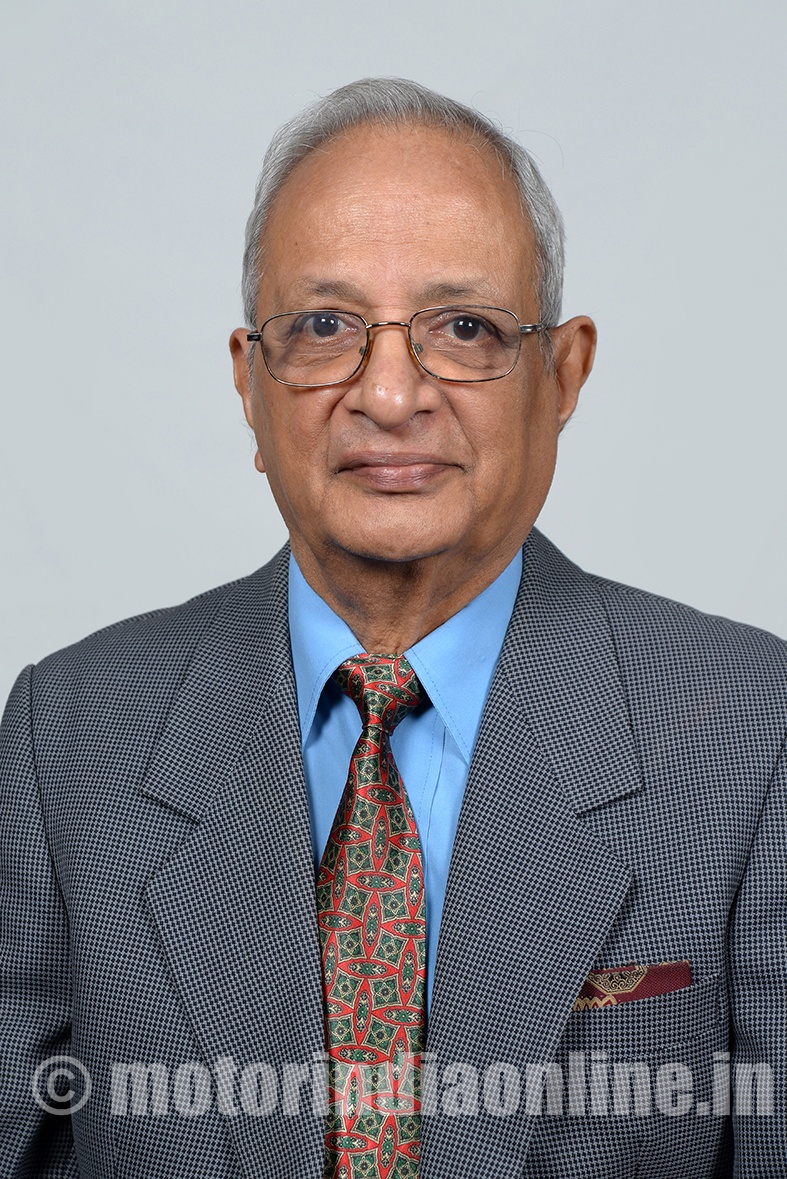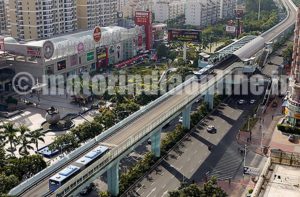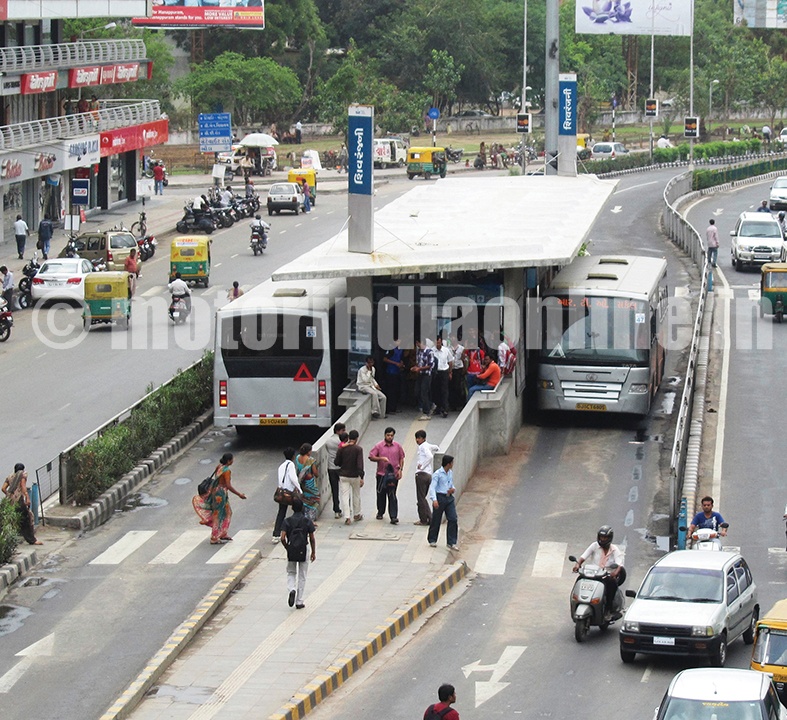By Dr. N.S. Srinivasan
The experience gained so far has shown that for finding a long-range solution to traffic and transportation problems in cities, it is necessary to provide an efficient and affordable mass transport system. Among various systems prevailing in the metropolitan cities in the country, the high capacity metro rail system introduced in Delhi has been successful, and efforts are being made to introduce the system in other metropolitan cities.

Now there is growing enthusiasm to introduce the metro rail system in the second-level cities like Coimbatore, Tiruchirappalli and Madurai. For its efficient operation, it is necessary to provide at least 30 kilometres of network in each city in the first phase and 60 more kilometres in each city in the second phase. The implementation of the first phase in these three cities would require a capital investment of about Rs. 41,000 crores in the case of underground rail system and Rs. 20,000 crores for elevated metro rail system. In developing economies where there are limitations to availability of capital resources, it is necessary to look into various characteristics of the system and also the possible alternatives.
Kolkata and Delhi metro rail systems
The first metro rail system was introduced in Kolkata. Due to various reasons the ridership of the metro rail was very low, with the result that the Kolkata metro ran into huge loss. A critical study revealed that such a system cannot be financially viable, and the Government has to extend financial support in some form or the other.
In view of the above, the Government provided various  incentives and subsidies for the introduction of metro rail system in Delhi, as given below:
incentives and subsidies for the introduction of metro rail system in Delhi, as given below:
- 30 per cent of the project cost financed through equal equity contributions by the Central Government and State Government.
- Both the Governments financed an additional 5 per cent of the project cost through an interest-free loan to cover the cost of land acquisition.
- 60 per cent of the funds were obtained in the form of long-term loan from the Japanese Bank of International Cooperation (JBIC) at the interest rate of 1.14 per cent with a 10-year moratorium period.
- The Government exempted taxes and duties constituting 16 to 20 per cent of the project cost.
- Exemption of income tax
- The Government gave development rights over real estate for generating additional revenues and gave exemption to property tax and capital gains tax.
- In addition, the Government extended to the metro rail projects 10 per cent of the project cost as O and M (operation and maintenance) support during the initial years of commissioning of the project.
In spite of all this support, the average fare is Rs. 8 to Rs. 30 per trip in Delhi, which is beyond the reach of low-income people. Even the middle-income people who generally own motorised two-wheelers and cycles find it financially difficult to travel by metro rail. At present only three per cent of Delhi’s population travel by metro, and most of them have to rely on feeder services to reach their destinations.
Basic issues
Considering the limitations in the finances available in the country, such huge investment is beyond the reach of the society. Moreover, the present and future passenger traffic in the second-level cities do not warrant such a high capacity system.
It is to be recognised that as in the case of Kolkata, the ridership level in the second-level cities will be low. As against the present bus fare of Rs. 3 to 14 per trip in these cities, the metro fare will be Rs. 10 to 40 as in the case of Chennai metro rail. Motorised two-wheelers and cyclists who account for a large percentage of trips cannot afford to travel by such a costly system.
The above facts reveal that the second-level cities like Coimbatore, Tiruchirappalli and Madurai do not warrant high capacity and cost-intensive metro rail system. They require a suitable alternative system meeting the requirements of these cities at a reasonable cost.
BRT, as an alternative
One of the good alternatives is to introduce the Bus Rapid Transit (BRT) system, which is operating successfully in many cities all over the world. In this system, dedicated space is provided for the operation of buses on the carriageway, so as to increase the operational efficiency of the buses. The BRT system carries 10,000 to 20,000 passengers per hour, and the cost ranges from Rs. 10 crores to Rs. 18 crores per kilometre. The results of the studies conducted on the BRT system operating on Janmarg in Ahmedabad are:
- Average peak hour speed of 25 kilometres per hour
- Average fare of a rupee per kilometre as against Rs. 8 to Rs. 30 per trip by Delhi metro rail
- Reliable, comfortable, affordable and popular for all types of trips
- Delhi metro is 40 times costlier than Janmarg BRT
For providing BRT in the centre of the road (carriageway) and to earmark adequate space for the movement of the remaining traffic, a land width of 30 metres would be required. To provide bus bays at the bus stops, an additional space of 8 metres would be required. Such land widths are not generally available in the second-level cities. With a view to achieving a long range solution to this problem, it is desirable to provide elevated BRT in the middle of the road.
Elevated BRT
Elevated BRT is similar to MRTS (elevated train system) in Chennai, but instead of train and rail, buses will operate  on elevated road, called technically ‘viaduct’. This system provides congestion-free operation of buses, high frequency and technically modern operation. This system can carry 10,000 to 30,000 passengers per hour per direction, and thus will meet the travel demand of the second-level cities efficiently.
on elevated road, called technically ‘viaduct’. This system provides congestion-free operation of buses, high frequency and technically modern operation. This system can carry 10,000 to 30,000 passengers per hour per direction, and thus will meet the travel demand of the second-level cities efficiently.
The BRT Sunway line in Malaysia is the first such system introduced in South-East Asia. It is a public-private partnership project. The electric buses operating on this system are eco-friendly and ensure a comfortable journey without jerks and vibrations. This system being an efficient, reliable and convenient public transport of international standard, Prime Minister Najib said that “it is a pride of the nation”.
The country has vast experience in building viaducts, i.e., elevated roads, manufacturing modern buses suiting the requirements of BRT and operation of modern BRT system. It is hoped that the authorities concerned will provide such elevated bus rapid transit system in the second-level cities in Tamil Nadu.